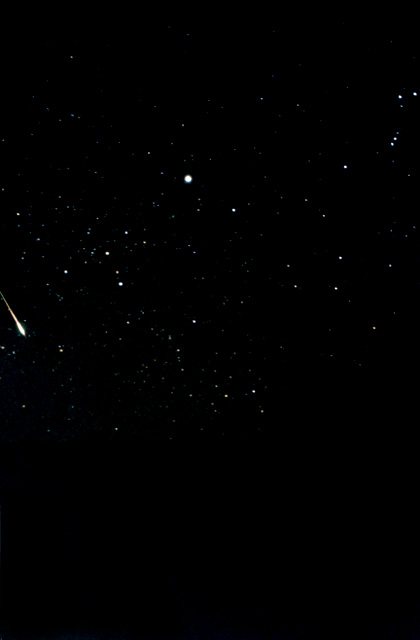BOREALIS 2000
NEWS
|
THE 2002 LEONID METEOR STORM |
M E T E O R S T O R M W A T C H
On the night of November 18/19, sky watchers
will observe what promises to be the best meteor storm to come for a generation.
Most years, the Leonid meteor shower produces only a few meteors a minute,
but not so this year...
500 to 1000 Leonids per hour may be seen from
many dark sky regions in Europe (avoid urban light and air pollution!) marking
the first peak of the storm at about 04:00 UTC on Tuesday morning.
The second peak will occur about six hours later (5:30 AM EST, 2:30 AM
PST) with an even bigger outburst over North America. As many as 2000
Leonids per hour may be seen over many
dark sky regions of the United States (despite the almost full
Moon!). Mountain tops (above the local aerosol layer)
and the deserts of the Southwest (dry and pollution-free air)
belong to the ideal locations to observe the Leonids.
The 2002 shower will probably be the last with the potential
for storm activity for at least 29 years. Some predictions suggest that the
next Leonid storm will not be seen until the year 2098...
Tips for observing the Leonids:
Location: Choose your viewing location
wisely according to the conditions of weather and the urban light (and air)
pollution. A trip to the country side, desert or any other remote dark sky
location is highly recommended. The darker the sky, the more meteors will
be seen.
Staying warm: Don't underestimate the
temperatures you are about to face! Wear warm clothing (bring
more layers than you think you need!) and crawl in a sleeping bag (flat
on the ground looking up). A thermos with coffee, tea, hot chocolate
or else will most likely be appreciated. Extra blankets may become useful
in the colder morning hours.
The lunar glare: Staring at the Moon will
ruin your night vision! Try to find an observing site with skies free of urban
lights (especially toward the east), where you can lie
down in the Moon light shadow of a tree, building or else. Look toward the
darkest part of the sky. You may further minimize the lunar glare by choosing
a viewing location where the air is dry and clear: Mountain tops (rising
above the aerosol layer and above the more humid layers of the atmosphere)
and deserts (in California, Arizona, New Mexico) are
prime locations.
Earthgrazers: The remarkable Leonid earthgrazers
produce long and colorful tails and will be seen on Monday evening between
11:00 PM and midnight.
Observing hours:
Start observing the first peak of the Leonids
in Europe at 3:30 AM in the morning hours of
Tuesday 11/19/02. The peak is expected for 5:00 AM
(04:00 UTC). The show will end around 6:00 AM.
The second peak of the meteor storm will be visible
over North America in the Tuesday morning hours:
The East Coast of the United States will start
to experience increasing meteor rates around 4:00 AM. The peak will occur
at 5:30 AM. Continue to watch until dawn.
The West Coast hours for Leonid observation lie
between 1:00 AM and 5:00 AM, with the storm maximum occurring at 2:30
AM.
Leonid earthgrazers will be seen on Monday evening between 11:00
PM and midnight at all observing locations.
US Weather forecasts for the night of the Leonids:
Ideal Leonid observing conditions are expected for Arizona, the Mojave desert
and Sierra in California, Nevada, Utah, New Mexico, Texas, the Southeast and
Florida.
Conditions are not looking very promising for
coastal regions and the Central Valley in California (fog!), the Northeast,
Midwest and Northwest (overcast/cloud covers, rains, storms):
California: Widespread
fog conditions in the Central Valley and the coastal areas are expected for
tonight. You may want to consider visiting the Sierra Nevada or the Mojave
desert (Joshua Tree Natl. Park, Mojave Natl. Monument) on Monday night/Tuesday
morning. You might as well take the day off on Tuesday ;-)
Northeast, Midwest and Northwest of the US: Check
local forecasts for tonight and maybe consider choosing an observing
site traveling southward from your location (hundreds of
miles if necessary...). It will be worth the effort!
Great locations to see the Leonid meteor storm:
The Sierra Nevada, Mt. Shasta, Joshua Tree Natl. Park, Mojave
and Colorado Deserts, Death Valley, Black Rock Desert, the Colorado Plateau,
Grand Canyon, Sedona, Bryce Canyon, Canyon Lands, Arches Natl. Park
Image Galleries:
The
2002 Leonids Meteor Gallery / spaceweather.com
The
2001 Leonid Meteor Storm
Other Leonid sites:
Armagh
Observatory
The International Meteor
OrganizationAll images © 2000 - 2023 Dirk Obudzinski
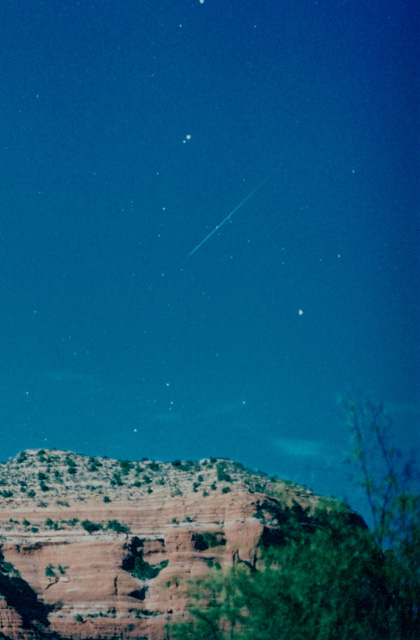
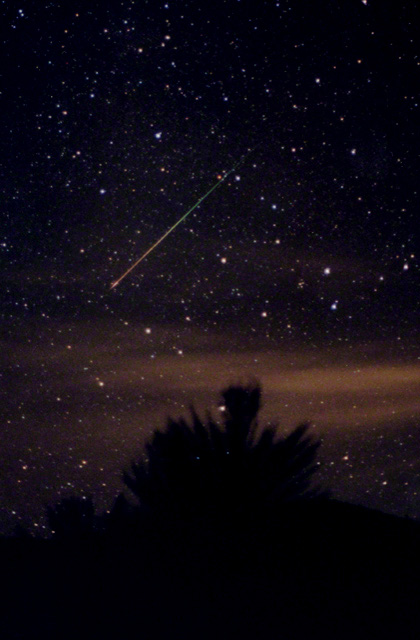 2001 Leonid Meteor Storm Location: Mojave National Monument in California
2001 Leonid Meteor Storm Location: Mojave National Monument in California
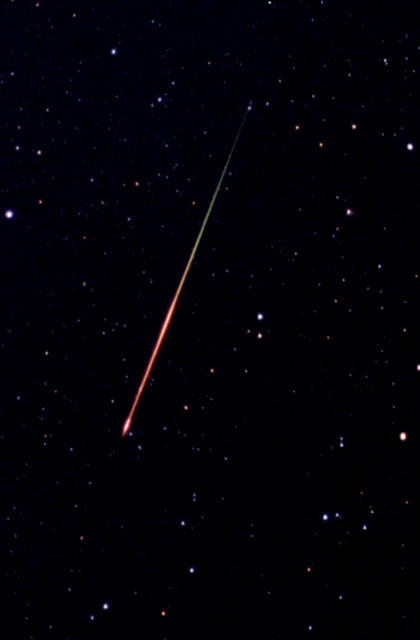 Leonid smoke trail in Orion's bow
Leonid smoke trail in Orion's bow
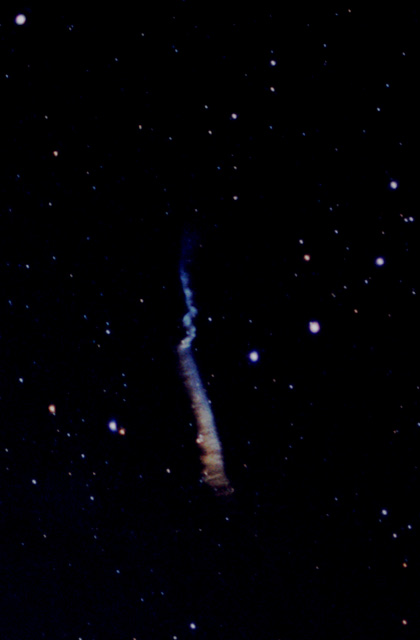 Leonid below constellation Cassiopeia
Leonid below constellation Cassiopeia
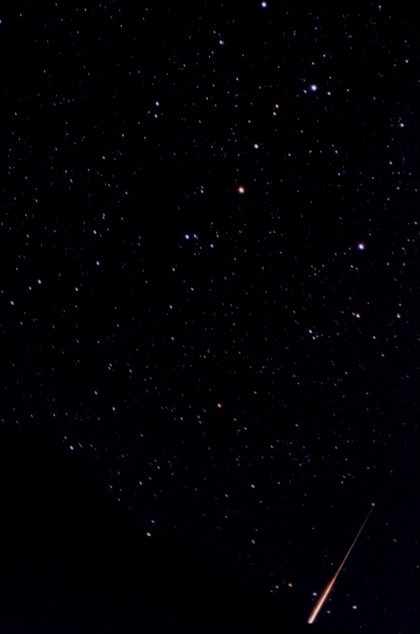 Leonid and Sirius in Canis Major and Orion
Leonid and Sirius in Canis Major and Orion
Sedona, Arizona - Nov. 19
photograph:
© 2000 - 2023 Dirk Obudzinski






